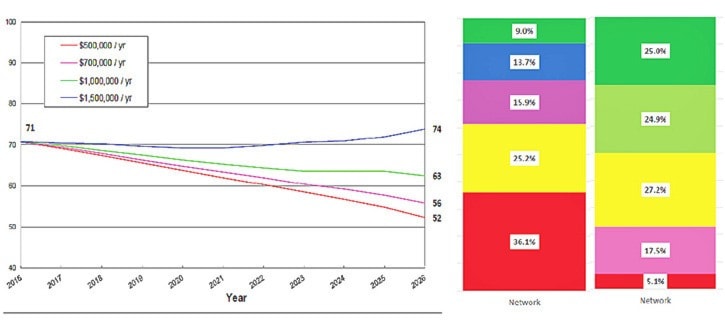Hope’s roads need investment or it will continue to deteriorate, according to engineer Alan Reggin, who presented to council at the Nov. 14 council meeting.
His presentation noted that about 61 per cent of Hope’s roads, in terms of cracking area, fall in the poor and very poor classifications. Overall, 49.9 per cent of roads scored “satisfactory” or “good” in terms of pavement condition.
The proportion of roads that should be fixed has also gone up from 51 per cent to 57 per cent when comparing a 2003 study to this year’s study.
Reggin explained that these roads are termed “backlog roads,” where in an ideal world with no financial constraints, they would be fixed.
In kilometre terms, Hope has 49.2km of its 80km network that is termed “backlog.”
Reggin noted that Hope’s road roughness is low, hence not making the state of the roads obvious.
“Some municipalities, the road condition will be deteriorating, but the complaints haven’t started yet, that’s because roughness is a lagging indicator,” said Reggin. “First the roads crack, then they start to get rough, and then the complaints come in.”
Reggin’s presentation also compared Hope’s roads in terms of cracking area with other municipalities. Hope ranked the worst among them. Comparing major roads, Hope’s cracking per cent was 21.7, compared to New Westminster’s 8.8 percent, the second worst on the presentation. On local roads, Hope’s 22.1 per cent cracking compared to Fernie’s 13.6 per cent — the second-worst.
Reggin presented four models of funding for maintenance and redoing roads at $500,000, $700,000, $1 million and $1.5 million per year. Only if the District budgets $1.5 million would road quality eventually improve. The first two budgeting levels only manages the rate of degradation.
In his analysis, Reggin noted that $1 million is the funding level required to keep the amount of backlog roads at current levels, although Reggin’s graphs show that cracking and overall pavement condition will continue to degrade.
District operations director Kevin Dicken noted that he would seek funding to improve maintenance on roads that still are in good shape.
Dicken explained that roads can sometimes be maintained by crack sealing, which costs $2-per-unit, according to Reggin’s presentation. Crack sealing should be done when cracks emerge, and maintained annually.
“The key to pavement maintenance is there’s a threshold, where once you get beyond a certain threshold, it’s too far gone,” said Dicken. “That’s typically why you’ll see highway maintenance departments doing an annual crack sealing program.”
Dicken explained how Seventh Avenue was a road which was beyond crack sealing’s help. They ground the roadway down four inches, “basically to gravel,” and discovered that cracks went right through the thickness of the surface.
“No amount of crack sealing is going to prevent that road from further degradation,” said Dicken.
He added that much of the backlog roads are the result of neglecting maintenance, making road reconstruction the only way forward — at $65 per square metre.
Responding to a question from Coun. Scott Medlock, Reggin advised that the way forward would be to keep road safe such as fill potholes.
“Which unfortunately is money that’s going to those roads that are in the worst conditions,” said Reggin.
Reggin suggested the second priority was to maintain roads in good condition, rather than spend it on roads that need reconstruction.
“You’re not going to lose an opportunity to reconstruct it,” he said.
